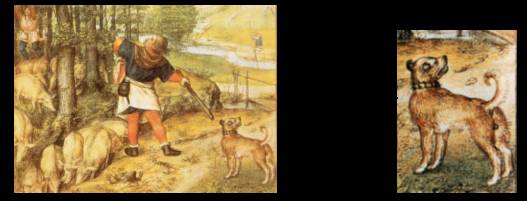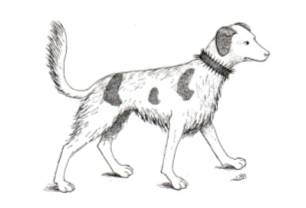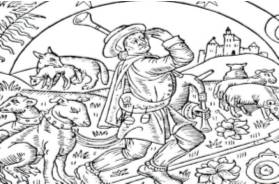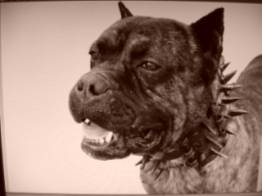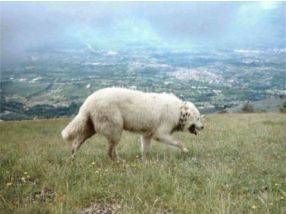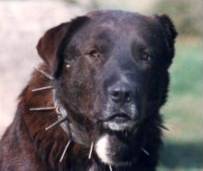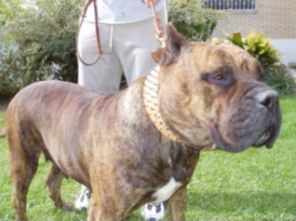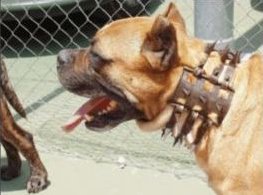|
¡Spiked Collars!
¡Carlancas! Our primitive ancestors had to realize soon about the ver many skills of these intelligent lupoids. The sensorial faults of man were soon overbalanced by those primitive domestical allies. The lack of intelligence in the beast, soon balanced by the ingenious mind of humans. No doubt we can say that here lies the genesis for an unpaires symbiosis. For men, the dog is the ideal, natual aid who will help him hunt, guard the members of their communities and properties, alarm on possible predators lurking in the dark,o de predadores, trace scents.... The urge to protect our dogs lives, had to soon arise after so many advantages were outlined by the first time. The most vulnerable spots in a lupoid are maninly tail and ears which would act as handles in a fight or an attack, and thats why, the guard and hunting dogs have had then cropped for ages; as a measurement of passive defence. And above all, the animal´s neck, when struggling with its natual enemy, the wolf, remains as its weakest point. To be hurt in the neck may be an immediate lethal injury.
This is why,
from centuries ago, wide leather collars have had both a handling but
also a defensive meaning for the animal. In those case when the presence
of the natuarl predator was evident (bears and wolves in Europqe), a
more solid defence became necessary.This need will raise in very
different cultures, way apart from each other, basically at the same
time...
But it will be
undaer the Roman Empire when dogs spiked collars will start coming out
of the darknesses of Legends, and they will thourgh mosaics with big
game scenes where hunting dogs are depicted wearing neck protections. In
some cases, spiked.
Wee also see
warnings at the “Domus” entrances unde rthe title “cave canem” (Beware
the Dog) showing a fierceful guard dog showing its teeth and armed of
irons.... we also see mentiones the historiographic titles v.gr..... (In order to scare the wild beasts away, they are armed with ring shaped collars covered with nails)
No need to be
exhaustive, here goes some pictures from Midle age/Reinnasence
Collar of Bering (circa 1.515 )
Traditions and supertitions have also contributed to their name for centuries. In Spain they were forged one a year and a religious meaning stated that the three lined spiked linked to plaques stood there for the Holy Trinity, as the wolf was seen as a Biblical reincarnation of evil. Structurally, the type study of historiacal dogs spiked collars can be reduced to few samples:
Solid Metal Ring
(Closed/Open and spiked) as in the Serbian/Turkish samples. Should you wish to know more, maybe you have new info or pictures about this, or who knows... if you know about a beautiful antique pls send me a personal email message Manuel Turanzas
mturanzas@hotmail.com
Goiko, Spanish Alano wearing a historical spiked collar
Italian individual of Maremanno Abruzzese guarding in its natural habitat
Guard dog with Greek Lanaria
Oustanding Presa Canario bitch with broad, nailed collar
“Curro” , best Spanish Alano nowadays wearing precious collar named “Dama” ( XIX century?)
|
||||||||
